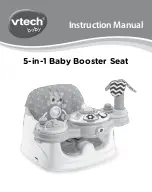
Long Gage Strain Sensor |
os3610
C o p y r i g h t © 2 0 1 2 M i c r o n O p t i c s , I n c .
o s 3 6 1 0 I n s t a l l a t i o n G u i d e , R e v i s i o n A
4
Figure 4
– Weld Location / Sequence
Allow the weld to cool and remove the Setting Bar. Clean off welding slag and inspect weld.
Mounting To Steel (Bold-On Brackets):
An alternative mounting bracket shown in Figure 5 is available as an option that can be fastened
to the test specimen using two ¼-20 screws. Button head cap screws are recommended to allow
clearance for set screw Hex-Key. It is important that mounting brackets are properly spaced and
axially aligned prior to mounting. If axial alignment is not maintained, the sensor may bind
leading to reduced sensor accuracy. The Setting Bar shown in Figure 2 is available to hold the
mounting brackets in alignment and properly spaced while the mounting holes are transferred to
the specimen surface. The Setting Bar has flats cut into each end that properly position the end
brackets. Alternatively, the Bolt-on drill guide listed in the “Installation Tools” section can be
used. To use the Drill Guide, securely clamp it to the surface. Drill the four holes using the Drill
Guide to guide the drill bit. After both brackets are bolted securely to the surface, check the
alignment by verifying that the Setting Bar will drop into the brackets.
Figure 5
– Bolt-On Mounting Bracket
Mounting To Concrete:
The concrete mounting brackets shown in Figure 6 may be attached to concrete by inserting the
concrete mounting bracket stud into a drilled hole and securing with anchoring cement or epoxy.































